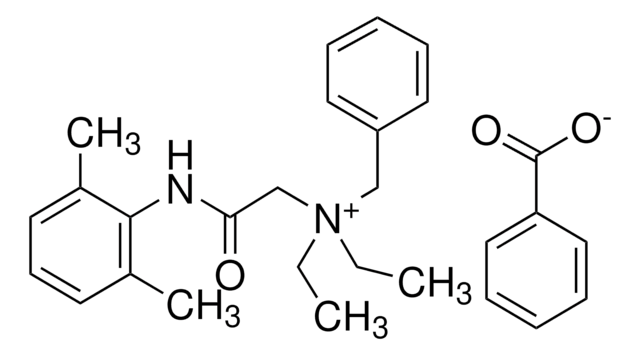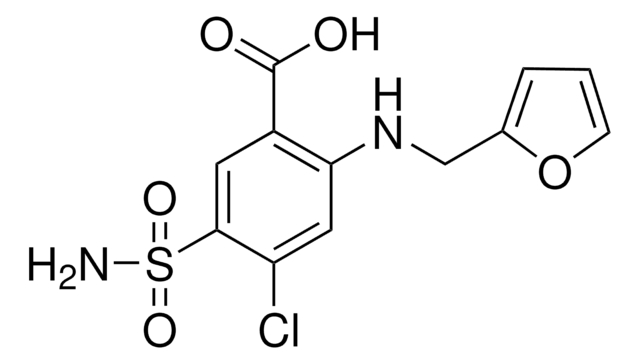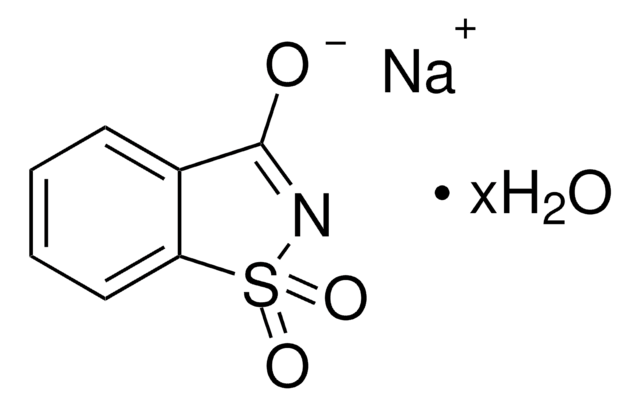D5765
Denatonium benzoate
≥98%
Sinónimos:
N,N-Diethyl-N-[(2,6-dimethylphenylcarbamoyl)methyl]benzylammonium benzoate, Benzyldiethyl(2,6-xylylcarbamoylmethyl)ammonium benzoate, THS 839
About This Item
Productos recomendados
Quality Level
assay
≥98%
form
powder
mp
164-168 °C (lit.)
SMILES string
[O-]C(=O)c1ccccc1.CC[N+](CC)(CC(=O)Nc2c(C)cccc2C)Cc3ccccc3
InChI
1S/C21H28N2O.C7H6O2/c1-5-23(6-2,15-19-13-8-7-9-14-19)16-20(24)22-21-17(3)11-10-12-18(21)4;8-7(9)6-4-2-1-3-5-6/h7-14H,5-6,15-16H2,1-4H3;1-5H,(H,8,9)
InChI key
VWTINHYPRWEBQY-UHFFFAOYSA-N
¿Está buscando productos similares? Visita Guía de comparación de productos
General description
Application
- To prepare anti-gnawing bio-polymer composites using zinc stearate (ZnSt) and capsicum oleoresin (CO) impregnated in silica (SiCO) and polybutylene succinate(PBS).
signalword
Danger
hcodes
Hazard Classifications
Acute Tox. 2 Inhalation - Acute Tox. 4 Oral - Eye Dam. 1
Storage Class
6.1A - Combustible acute toxic Cat. 1 and 2 / very toxic hazardous materials
wgk_germany
WGK 2
flash_point_f
212.0 °F - closed cup
flash_point_c
100 °C - closed cup
ppe
dust mask type N95 (US), Eyeshields, Gloves
Elija entre una de las versiones más recientes:
¿Ya tiene este producto?
Encuentre la documentación para los productos que ha comprado recientemente en la Biblioteca de documentos.
Los clientes también vieron
Nuestro equipo de científicos tiene experiencia en todas las áreas de investigación: Ciencias de la vida, Ciencia de los materiales, Síntesis química, Cromatografía, Analítica y muchas otras.
Póngase en contacto con el Servicio técnico












